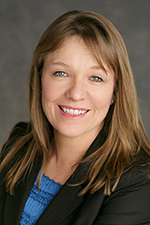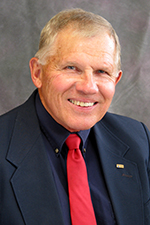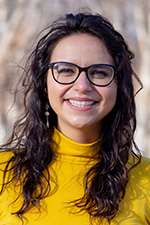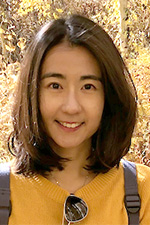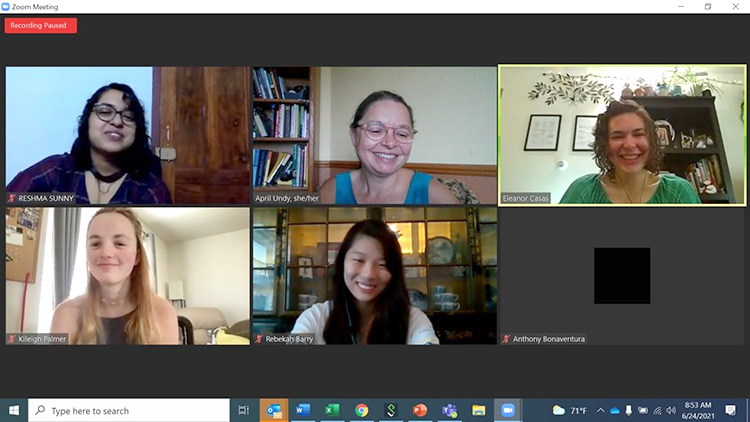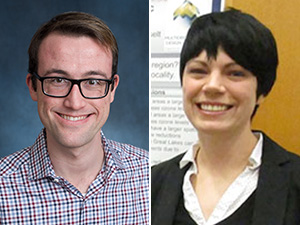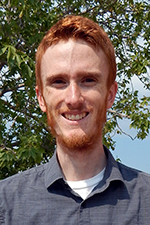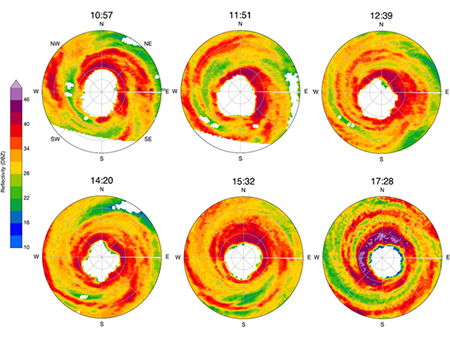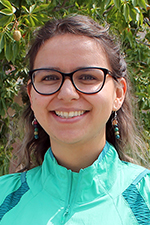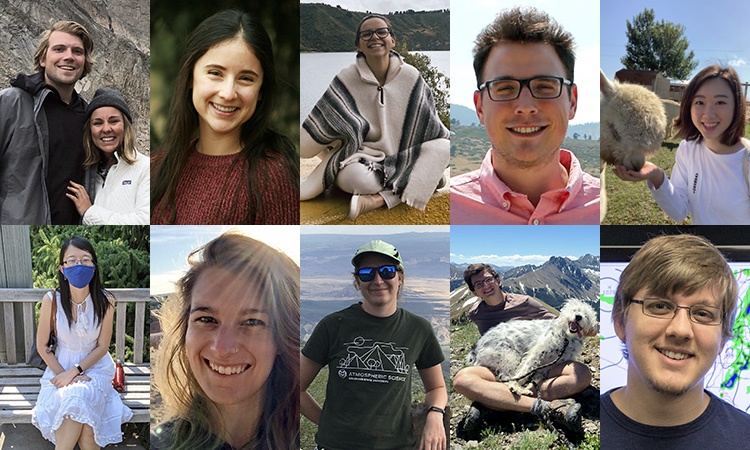The department celebrated fall graduates with a hybrid in-person and Zoom ceremony Nov. 30. Advisers shared information about each graduate, and family and friends were able to attend.
We asked our graduating students about their plans following graduation and the most important thing they learned at CSU. Here are their responses.
Michael Cheeseman
“I will continue working with Jeff and Bonne to investigate air pollutant exposure disparities at the intersection of education, race, and poverty. Then I hope to be an outdoor adventure guide for a couple months.”
“The most important thing I have learned at CSU is to be patient and kind with my own life and career.”
Kyle Chudler
“I accepted a job offer at RTI International as a hydrometeorologist at their water resources office in Fort Collins!”
“The most important thing I learned at CSU Atmos was how important having a great community is. I enjoyed doing my research here, but what made my time in grad school truly special was all of the friends I’ve made and still get to hang out with all of the time!”
Michael DeCaria
Michael will continue on to the Ph.D. program.
“Time management/setting priorities both for life and work. It was especially difficult during the pandemic, making it a hard-learned skill for the future.”
Nick Falk
“I am staying here for a Ph.D.!”
“I’m still in the middle of this, but the most important thing I have learned at CSU is the process of starting with a novel hypothesis/idea and developing it through to a full-fledged research project, then getting the results published in a peer-reviewed journal.”
Wei-Ting Hsiao
“I am and will still be here to continue my Ph.D.!”
“Living a cool life feels way better than being ‘successful.’ “
Allie Mazurek
“I am transitioning into the Ph.D. program, where I will continue working with my adviser (Russ).”
“The most important thing I’ve learned at CSU is the power of having a great support system in both research and non-academic settings.”
Yasutaka Murakami
“I moved back to Japan in August.”
“This is a tough question, but if I have to choose one, I would say time management.”
Chelsea Nam
“I am going to stay here at CSU and continue to work with Michael Bell as a post-doc fellow.”
“This is a hard question! I’d say all the nuts and bolts for tropical cyclone research.”
Jamin Rader
“I am continuing here at CSU in the Ph.D. program.”
“I’ve learned so many important things during my M.S. … I have most appreciated participating in a collaborative data science group, and challenging traditional methods alongside the many other bright minds in the Barnes group.”
Naufal Razin
“I will be moving next door to CIRA as a postdoctoral fellow.”
“This is a tough question because I’ve learned so many things. But if there is one thing that encapsulates my experience at CSU, it is: Surround yourself with great people and you will succeed.”
Justin Whitaker
“NASA Postdoctoral Program Fellowship at NASA Marshall.”
“Your friends and communities are an important part of grad school.”
Kevin Yang
“I will be staying here for my Ph.D. (excited to do more great science).”
“Understand your true value and always remain eager to learn and grow.”
Photo collage, from left to right, top to bottom row: Michael Cheeseman, Kyle Chudler, Michael DeCaria, Nick Falk, Wei-Ting Hsiao, Allie Mazurek, Yasutaka Murakami, Chelsea Nam, Jamin Rader, Naufal Razin, Justin Whitaker and Kevin Yang.
Fall 2021 Graduates
| Michael Cheeseman* |
Ph.D. |
Adviser: Jeff Pierce |
| Kyle Chudler* |
Ph.D. |
Adviser: Steven Rutledge |
| Michael DeCaria* |
M.S. |
Adviser: Peter Jan van Leeuwen |
| Nick Falk* |
M.S. |
Adviser: Susan van den Heever |
| Wei-Ting Hsiao |
M.S. |
Advisers: Eric Maloney/Elizabeth Barnes |
| Allie Mazurek |
M.S. |
Adviser: Russ Schumacher |
| Yasutaka Murakami |
Ph.D. |
Advisers: Chris Kummerow/Susan van den Heever |
| Chelsea Nam* |
Ph.D. |
Adviser: Michael Bell |
| Jamin Rader |
M.S. |
Adviser: Elizabeth Barnes |
| Naufal Razin* |
Ph.D. |
Adviser: Michael Bell |
| Justin Whitaker |
Ph.D. |
Adviser: Eric Maloney |
| Kevin Yang |
M.S. |
Adviser: Christine Chiu |
*Completed defense fall semester but technically will graduate spring semester








